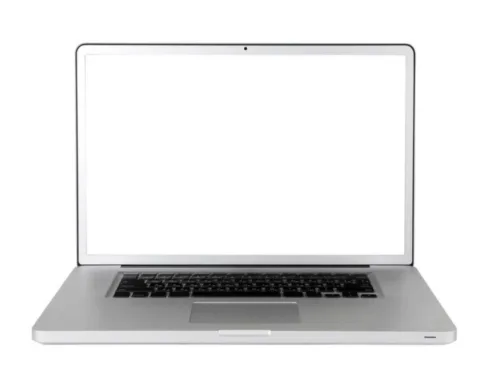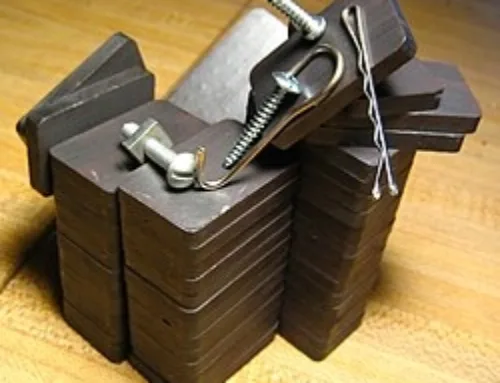Are you wondering where is the strongest part of a magnet and why it matters? Whether you’re a student, hobbyist, or just curious about how magnets work, understanding magnetic poles strength can make all the difference in getting the most out of your magnets.
Magnets aren’t just simple objects that stick to your fridge—they have a fascinating structure where certain spots pack more magnetic power than others. In this article, you’ll discover exactly where a magnet’s force is strongest, why that happens, and practical tips on how to identify and use those powerful areas effectively.
Ready to unlock the secrets behind the strongest magnet location? Let’s dive right in!
What Is a Magnet
A magnet is an object that produces a magnetic field, which attracts certain materials like iron, nickel, and cobalt. This invisible force can pull or push other magnetic materials without direct contact. Magnets come in different types, mainly permanent magnets and electromagnets.
- Permanent magnets hold their magnetic properties all the time. They are made from materials like neodymium, ferrite, or alnico, where tiny regions called magnetic domains are aligned in the same direction.
- Electromagnets generate a magnetic field only when an electric current flows through a wire coil. These are common in devices like motors and speakers because their strength can be controlled.
Inside a magnet, magnetic domains act like tiny bar magnets aligned together, creating a unified magnetic field. This field extends around the magnet and is strongest at specific points. Visualizing the magnetic field is easier when using iron filings or magnetic field lines illustrations, which show how the force flows from one end of the magnet to the other.
Understanding what a magnet is and how it works lays the foundation for exploring where its magnetic force is strongest and how to identify that in practical use.
Identifying the Strongest Part of a Magnet
The strongest part of a magnet is always at its poles — the North and South ends. This is where the magnetic field is the most concentrated and powerful. If you compare the poles to the center or other areas of the magnet, you’ll notice the force is much weaker in those middle sections.
Scientifically, the reason behind this comes down to how the magnetic domains inside the magnet are arranged. At the poles, these domains line up perfectly and create a strong, focused magnetic field. Magnetic field lines, which you can think of as invisible lines showing the path of magnetic force, cluster densely at the poles. This concentration makes the poles the spot with the highest magnetic strength.
Imagine a bar magnet like a hose with water flowing through it. At the poles, it’s like the water is rushing out through a narrow nozzle—strong and focused. Around the middle, the flow spreads out and weakens. That’s why the poles give you the strongest push or pull.
For practical uses, this means when you need the most magnetic force, placing your object near the poles of the magnet is key.
How to Find the Poles of a Magnet
Finding the poles of a magnet is pretty simple and can be done at home or in a basic lab setup. Here are some easy DIY methods to identify the North and South poles:
-
Use a Compass
A compass needle always points toward the Earth’s magnetic North. Bring your magnet close to the compass:
- The magnet’s North pole will repel the compass needle’s North end (both are like poles).
- The magnet’s South pole will attract the compass needle’s North end.
This helps you mark which side of your magnet is which.
-
Iron Filings Test
Spread some iron filings on a piece of paper and place the magnet underneath. The filings will line up along the magnetic field lines:
- The filings cluster most densely at the magnet’s poles (strongest magnetic force).
This visually shows where the poles are located on the magnet’s surface.
- The filings cluster most densely at the magnet’s poles (strongest magnetic force).
-
Another Magnet Method
If you have a magnet with known poles, you can bring your unknown magnet close to it:
- Like poles repel.
- Opposite poles attract.
This simple approach lets you label your magnet’s North and South poles by observing attraction or repulsion.
Using these easy tools can help you quickly find the poles and understand where the magnetic force is strongest. This is especially useful if you want to use the magnet effectively for projects, repairs, or industrial needs.
Variations in Strength Depending on Magnet Shape and Material
The shape of a magnet plays a big role in where its strongest magnetic force is. For example:
- Bar magnets have their strongest magnetic fields right at the two ends, or poles.
- Horseshoe magnets bend the magnetic field toward the open ends, making those poles especially strong and focused.
- Disc magnets often have their strongest fields on the flat circular faces.
Aside from shape, the type of magnetic material also changes how the field strength spreads out:
- Neodymium magnets are super strong and concentrate their magnetic force heavily at the poles, making them popular for high-strength needs.
- Ferrite magnets are more affordable but generally have weaker magnetic fields, with force spread out more evenly.
- Alnico magnets offer moderate strength and tend to have stable, broad magnetic fields.
NBAEM is a trusted supplier known for high-quality magnetic materials. They provide a range of products made from neodymium, ferrite, and alnico to suit various applications — whether you need intense local power at the poles or a wider spread of magnetic force. For U.S. customers looking for reliable magnets, NBAEM’s expertise ensures you get the right strength and shape for your project or industrial use.
Practical Applications Why Knowing the Strongest Part Matters

Knowing where the strongest part of a magnet is, usually at the poles, is key in both industrial and everyday uses. In industries, magnets are used for lifting heavy metal objects, in motors, and in sensors. Placing a magnet so its poles touch the surface helps maximize the magnetic force, making lifting or holding tasks more efficient.
Around the house, magnets show up in fridge magnets, magnetic clasps on bags or jewelry, and in electronics like speakers and hard drives. Using the poles correctly ensures these magnets grip better and work as intended.
Here are some quick tips to get the most from your magnets:
- Always position the poles where you need the strongest pull or hold.
- For lifting or holding metal, align the magnet so both poles contact the surface.
- Avoid placing magnets with their center alone touching the object; the pull will be weaker.
- In motors or sensors, proper pole placement improves performance and reliability.
- Keep magnets clean and free from debris at the poles to maintain strength.
By focusing on the strongest magnet location—the poles—you get more power and better results whether for heavy-duty work or daily tasks.
FAQs about Magnet Strength and Poles
Why are the poles the strongest part of a magnet?
The poles of a magnet are where the magnetic field lines are most concentrated, making these spots the strongest. Magnetic domains inside the magnet align and push the field outward mainly at the North and South poles, giving them the highest magnetic force compared to other areas like the center.
Can the strength be increased at the center of a magnet?
Generally, no. The center of a magnet has fewer magnetic field lines coming out, so the force there is weaker. To boost overall strength, manufacturers focus on improving the magnetic material and shape rather than increasing force at the center.
How do temperature and damage affect magnet poles and strength?
Extreme heat can disrupt the alignment of magnetic domains, reducing the magnet’s strength, especially at the poles. Physical damage like cracking or bending can also break up the domain structure, weakening the magnet. It’s best to keep magnets in stable environments to maintain their full strength.
For more detailed info on magnet materials and strength, check out what are magnets made of and how to measure magnet strength.





评论